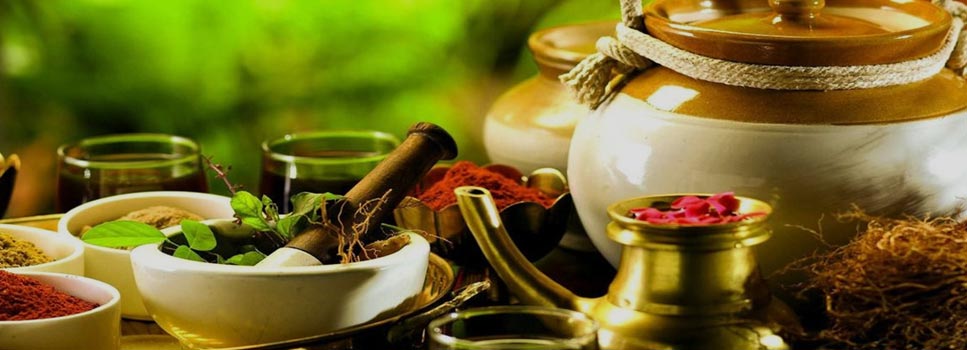Explore Ayurveda on a Kerala Trip
Updated:- [06/July/23] Kerala tourism is directly associated with a destination of diverse cultures as well as landscapes, from hills to beaches, from spice gardens to backwaters and many more. But do you know that Kerala is also famous for being the abode of a large number of Ayurveda practitioners and research institutes? Kerala is known to be the only state where Ayurveda is used as mainstream medication and also for therapies. Might sound astounding to many, but a significant number of tourists flock to Kerala, especially for undergoing Ayurvedic aid for beauty care, body slimming, spas, stress management, and anti-aging treatment.

India is the land of origin for Ayurveda and is the ancient healthcare system in the world with a perfect blend of medicine with philosophy for 5000 years. Ayurveda practices a naturalistic system that encompasses the physical, mental and spiritual blossom of humanity. Application of the Ayurvedic treatment depends on the humors of the human body, namely, Pitta, Vata and Kapha, and ensures their right balance. The prevention of diseases remains the primary concern of Ayurveda and curing it is the secondary concern. According to Ayurveda, along with the three humors (tri doshas), the five elements of the universe, earth, water, fire, air and ether should work in cohesion for the best results.
This was the basic information about Ayurveda. Coming to experience Ayurveda in Kerala, the Best time to visit Kerala is during the monsoon season from the months of June to November. Kerala is known to be the haven for Ayurveda due to its unique geographic isolation. Kerala is blessed with an abundance of medicinal herbs and a favourable climate; especially it is the first state to receive rainfall in India. The rainy season purifies the air and opens the skin pores so that the herbal oil can penetrate deep inside. Moreover, the temperature remains even almost throughout the day which facilitates the procedure of Ayurvedic treatment and therapies.
Let’s know how Kerala became the epicentre of Ayurveda in India
Ayurveda is a section of Atharva Veda, known as Upaveda. Among the ‘troika’ (three men behind the Ayurvedic research) of Ayurveda, Charaka, Vagbhata and Sushruta, Vagbhatta is considered to be the prime promoter of Ayurveda in Kerala. Vagbhatta compiled a medical text, named Ashtangahridayam and imparted the significance of Ayurveda to his eight disciples and named them Ashtavaidyas. The Ashtavaidya tradition existed between the 13th and 17th centuries in Kerala.
The descendants of the Ashtavaidya families have continued to cater ayurvedic services by extending personalised treatments through the implementation of ayurvedic techniques with herbs and other medicinal plants to retain a healthy balance of mind, body and soul. An herbal potion known as Kashayam was also rooted in Kerala and thus Kashaya Chikitsa emerged from the state. The healing technique by Panchakarma Therapy is deeply practised in Kerala and along with this few more ayurvedic treatments found their origin in Kerala such as Pizhichil, Thalapothichil, Podikizhi, Mukkipizhichil, Shirodhara, Navarakizhi, Pachakizhi, Dhara and Navarakkizhi.
The eight branches of Ayurveda as determined by Ashtavaidyas are:
- Rasayana Chikitsa - Rejuvenation Treatment
- Kaya Chikitsa - General Medicine
- Shalya Chikitsa - Surgery
- Graha Chikitsa -Eradicating evil spirits
- Bala Roga Chikitsa - Pediatrics
- Vajeekarana Chikitsa - Identifying Aphrodisiacs
- Urdwanga Tantra - E.N.T and Ophthalmology
- Visha Chikitsa - Toxicology
Kerala Tour Packages:
- Amazing Kerala Budget Tour
- Best Magical Kerala Tour
- Exotic Kerala Tour
- Offbeat Kerala Family Package
- Kerala Hills Backwater Beaches
- Through the Hills and Backwaters
- Beaches and Backwaters of Kerala
- Enchanting Hill Stations Tour
- Relaxing Beach Vacation
- Beach Excursion of Kerala
- Kerala Tamilnadu Tour
- Tamilnadu tour with kerala
- Kerala and tamilnadu package
- Karnataka and Tamil Nadu